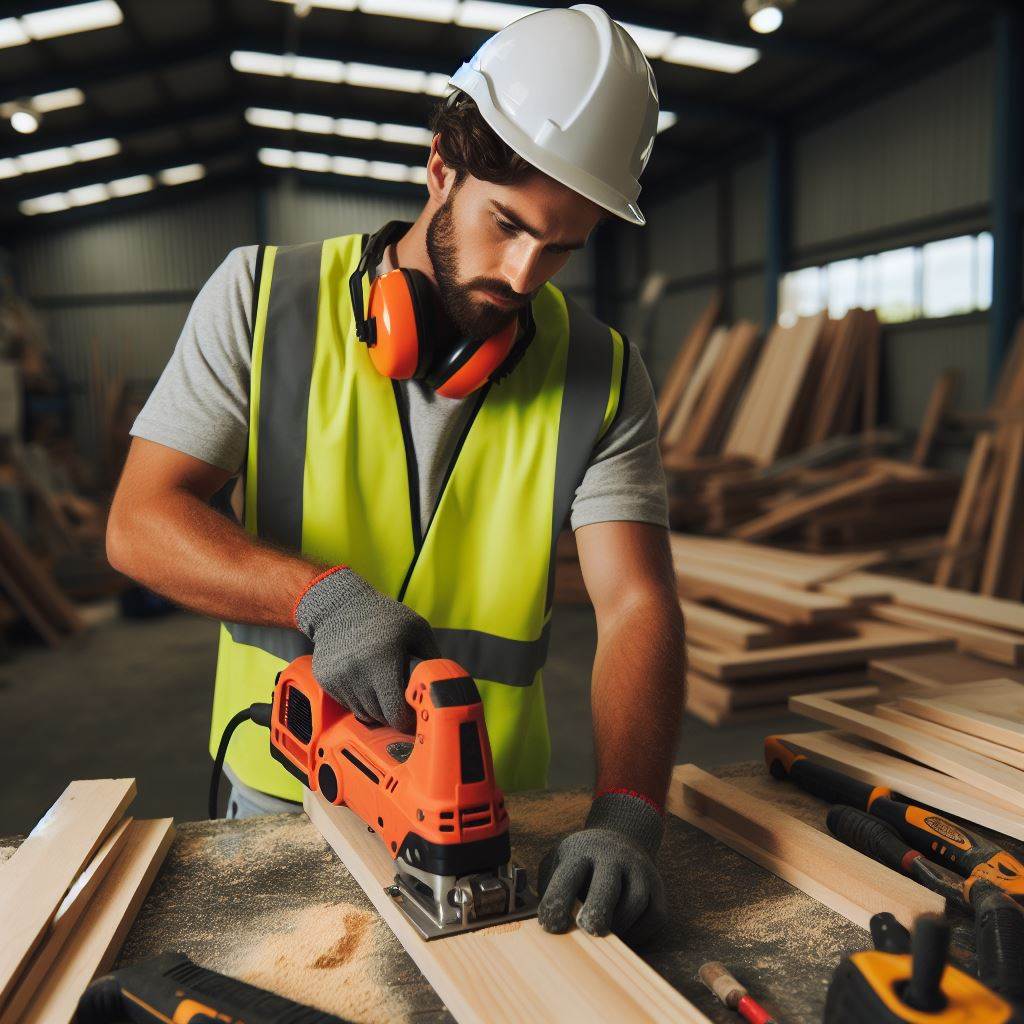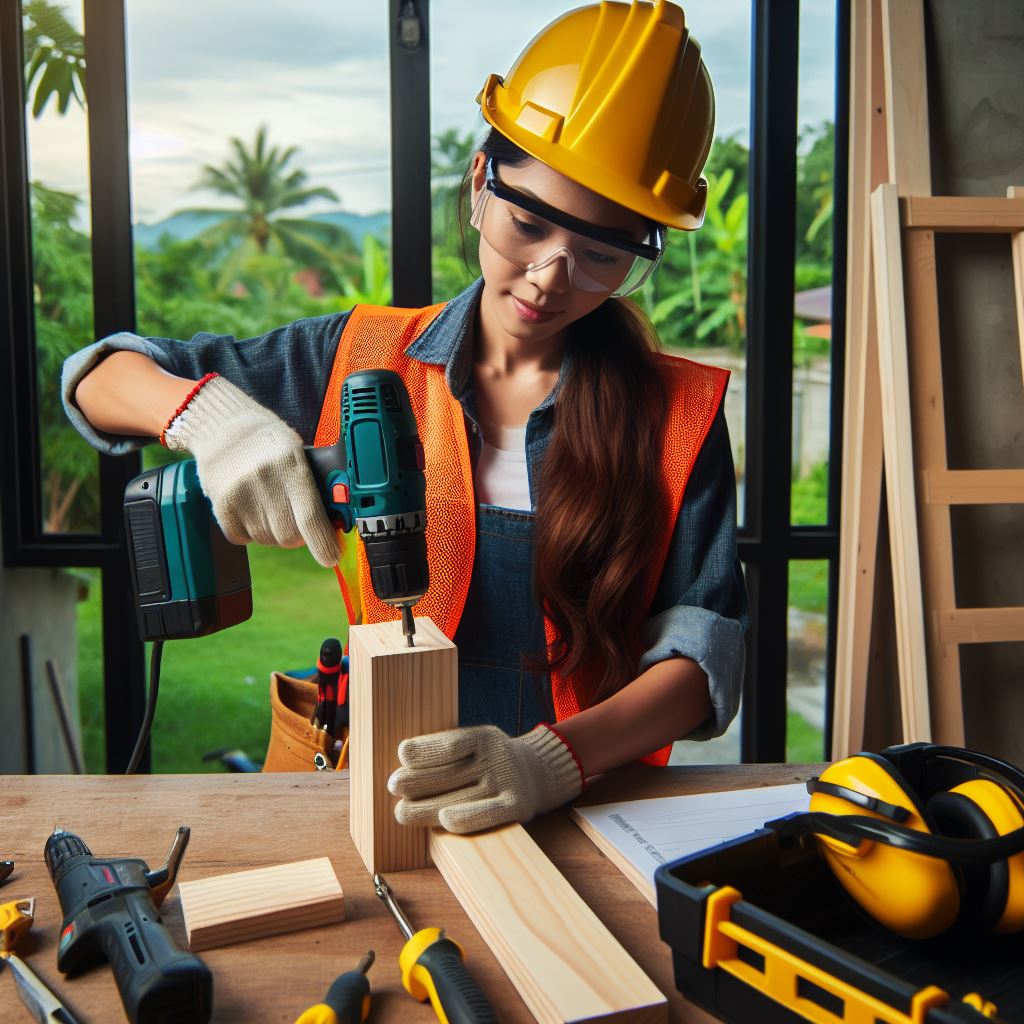Introduction
Explanation of the importance of keeping up with industry trends in carpentry
Keeping up with industry trends in carpentry is crucial for professionals to stay competitive and up-to-date.
Discussing carpentry trends in New Zealand for 2024 is relevant as it provides insights into the future of the industry.
In today’s fast-paced world, it is essential for carpenters to stay updated with the latest trends and techniques.
By keeping up with industry trends, carpenters can enhance their skills, improve efficiency, and deliver high-quality work to clients.
The relevance of discussing carpentry trends in New Zealand for the year 2024
Focusing on carpentry trends in New Zealand for the year 2024 is particularly important.
As the country continues to experience growth and development, the construction industry plays a significant role.
Understanding the future trends in carpentry allows professionals to align their expertise with the evolving needs of the market.
By discussing the predicted trends for the year 2024, carpenters can anticipate changes in materials, tools, and techniques.
This knowledge enables them to adapt their skillset, invest in new equipment, and embrace innovative approaches. It also helps them stay ahead of the competition and offer unique services to clients.
Additionally, understanding the carpentry trends specific to New Zealand allows professionals to cater to the local market’s preferences and demands.
They can incorporate sustainable practices, Maori design principles, and other cultural influences into their work, aligning with the country’s values and traditions.
Basically, staying updated with carpentry trends is essential for carpenters to thrive in the industry.
Discussing the trends specific to New Zealand for the year 2024 provides valuable insights and opportunities for professionals to excel in their craft.
Sustainable materials and practices:
- Focus on the growing demand for environmentally friendly construction methods.
- Discuss the use of sustainable materials such as bamboo and recycled timber.
- Highlight the importance of reducing waste and implementing energy-efficient techniques.
In recent years, there has been a significant shift in the construction industry towards sustainability.
As the world realizes the urgent need to combat climate change and preserve our environment, carpentry trends in New Zealand are also being influenced by this movement.
The growing demand for environmentally friendly construction methods
One of the key aspects of sustainable carpentry is the use of environmentally friendly construction methods.
There is a growing demand for practices that have minimal negative impact on the environment. Carpenters are now focusing on finding innovative solutions to reduce their carbon footprint.
The use of sustainable materials such as bamboo and recycled timber
An essential component of sustainable carpentry is the use of sustainable materials. Traditional timber is being replaced by alternatives such as bamboo and recycled timber.
Bamboo is a fast-growing plant that can be harvested within a few years, making it a highly sustainable choice.
Recycled timber reduces the need for deforestation and gives new life to materials that would otherwise be discarded.
Importance of reducing waste and implementing energy-efficient techniques
Reducing waste is another crucial aspect of sustainable carpentry. Carpenters are becoming more conscious about managing their waste and incorporating recycling practices.
Adopting circular economy principles can help minimize the amount of construction waste that goes to landfills.
Salvaging and repurposing materials can also contribute to waste reduction.
Sustainable carpentry emphasizes energy-efficient techniques and lifecycle considerations.
Carpenters use insulation, energy-efficient windows, and proper sealing.
They prioritize durability, reducing environmental impact.
Carpenters invest in green construction training.
They adapt to meet new regulations and certifications.
Sustainable carpentry meets demand for eco-friendly methods.
Carpenters use bamboo and recycled timber.
They reduce waste and implement energy-efficient techniques.
Carpentry contributes to a greener future.
Read: Kiwi Carpenter Salary Insights 2024
Technological advancements
- Technology transformed carpentry in New Zealand, introducing laser levels, digital measuring devices, and 3D modeling software.
- These tools ensure precise measurements.
- Digital devices replace traditional tapes, increasing efficiency.
- 3D software aids planning and visualization.
- Advancements enhance accuracy, efficiency, and productivity.
- Carpenters complete projects faster and earn more.
- Technology meets client expectations.
- It makes carpentry accessible to beginners.
- Advancements will continue to improve industry standards.
- Carpenters must stay updated to remain competitive.
Read: NZ Carpentry: Skills and Tools Needed
Prefabrication and modular construction:
In recent years, the construction industry in New Zealand has witnessed a significant rise in the adoption of off-site construction methods such as prefabrication and modular construction.
This trend is expected to continue and even accelerate in the year 2024. Here are some key points to understand the importance and benefits of these construction techniques:
Personalized Career Consulting
Unlock your potential with expert career advice tailored to your goals. Get personalized guidance and actionable steps toward your dream career in New Zealand.
Get StartedRise of off-site construction methods
- Off-site construction methods, particularly prefabrication and modular construction, have gained popularity due to their numerous advantages.
- These methods involve the manufacturing and assembly of building components in a factory or controlled environment, away from the construction site.
- Prefabrication allows for the simultaneous production of different components, reducing construction time significantly.
- Modular construction involves the construction of pre-made modules or units that can be easily transported and assembled on-site.
Benefits of prefabricated components
- Prefabrication offers several benefits, starting with cost-effectiveness.
- With streamlined processes and reduced material waste, prefabricated components can help save money during construction.
- These components are fabricated in a controlled environment, ensuring higher quality and precision in their construction.
- Additionally, the use of prefabricated components minimizes the need for on-site labor and simplifies the construction process.
- Furthermore, the construction time is significantly reduced, allowing projects to be completed faster.
- This fast-track approach is particularly advantageous in areas where time is of the essence, such as residential and commercial construction projects.
Increased use of modular construction
- Modular construction, which involves the use of pre-made modules or units, has gained popularity in both residential and commercial projects.
- The flexibility and adaptability offered by modular construction make it a preferred choice for various building types.
- Modular units can be easily transported and assembled, providing a faster and more efficient construction process.
- Moreover, modular construction allows for easy scalability and future expansion or reconfiguration of buildings.
- These modules can be designed and manufactured to meet specific requirements, ensuring customization and design flexibility.
- With sustainability being a growing concern, modular construction also promotes eco-friendly practices through reduced waste, improved energy efficiency, and recyclability.
In essence, off-site construction methods, such as prefabrication and modular construction, are gaining momentum in New Zealand’s construction industry.
These methods offer various benefits, including cost-effectiveness, reduced construction time, higher quality, and design flexibility.
The increased use of prefabricated components and modular construction is expected to shape the construction landscape in 2024 and beyond, promoting efficient and sustainable building practices.
Read: Carpentry 101: A Guide for Kiwi Beginners

Customization and Personalization
Today’s carpentry industry sees a rising demand for tailored solutions, driven by people seeking unique and customized woodwork.
Homeowners and businesses prioritize personalized spaces.
The surge in bespoke carpentry solutions reflects the desire for individual style.
Customers move away from mass-produced furniture, embracing one-of-a-kind pieces.
Customization allows control over design, size, and functionality, providing exclusivity to spaces.
Interior designers, architects, and homeowners collaborate with sought-after carpenters who meet specific needs.
Skilled carpenters transform ideas into beautifully crafted, customized wooden pieces.
Bespoke carpentry adds value to properties, increasing resale value significantly.
Unique, personalized carpentry creates lasting impressions on potential buyers, captivating their interest.
Beyond furniture, skilled carpenters offer customized flooring, doors, and wooden feature walls.
Clients prioritize sustainable choices, opting for responsibly sourced wood to reduce environmental impact.
Customization merges traditional craftsmanship with modern technology, broadening possibilities within carpentry.
In general, the carpentry industry in New Zealand embraces personalized craftsmanship, driven by a growing demand for unique solutions.
Clients value bespoke carpentry for its individuality and taste, enhancing aesthetics and adding property value.
As the demand for customization grows, the industry evolves with innovation and creativity, ushering in the future of carpentry.
Read: Carpenter Apprenticeships in NZ Explained
Health and safety measures
Health and safety measures play a vital role in the carpentry industry, prioritizing the well-being and protection of workers.
Importance of Prioritizing Safety in the Carpentry Industry
- Worker safety should be the top priority for every carpentry company, as it directly affects productivity and reputation.
- Accidents and injuries can lead to downtime, delay projects, and result in significant financial losses.
- Prioritizing safety creates a positive work environment, fostering employee satisfaction and retention.
- It is crucial to educate workers on the potential hazards they may face on the job and how to mitigate risks.
- Carpenters perform physically demanding tasks and work with various tools and equipment, increasing the likelihood of accidents.
Introduction of New Regulations and Guidelines for Worker Protection
- Governments and industry organizations recognize the need for updated regulations to enhance worker safety in the carpentry industry.
- New regulations aim to minimize workplace injuries, providing specific guidance on safety procedures and protective measures.
- Employers must comply with these regulations to create a safe working environment and avoid legal consequences.
- The introduction of these regulations demonstrates a commitment to the well-being of carpentry workers.
Use of Advanced Safety Equipment and Training Programs
- Advancements in safety equipment technology have revolutionized worker protection in the carpentry industry.
- Personal protective equipment (PPE) such as safety glasses, helmets, gloves, and high-visibility vests are essential for carpenters.
- Workers should receive comprehensive training on the proper use of safety equipment and follow established protocols.
- Regular safety training programs ensure that workers are up to date with the latest safety procedures and best practices.
- Safety equipment and training programs significantly reduce the risk of accidents and injuries, promoting a safer working environment.
- Companies should invest in advanced safety systems, such as fall protection gear and dust extraction systems.
- Technology-driven safety measures, such as automated saws with safety sensors, enhance worker protection.
- Implementing safety protocols and providing ongoing training programs demonstrate a commitment to worker well-being.
- Regular inspection of tools and equipment is necessary to identify potential hazards and ensure their proper functioning.
- Collaborating with health and safety professionals and organizations can provide valuable insights and guidance.
- Carpenters should be encouraged to report any safety concerns or near misses to promote a culture of open communication.
- Recognizing and rewarding safe practices and implementing safety incentives can further motivate workers to prioritize safety.
By prioritizing safety, adhering to regulations, and using advanced equipment and training programs, the carpentry industry can continue to improve worker protection and prevent accidents and injuries.
The well-being of carpenters should always be at the forefront of the industry’s efforts.
Conclusion
Main carpentry trends discussed
In closing, we have discussed some of the main carpentry trends expected in New Zealand in 2024.
These trends include sustainable and eco-friendly practices, digitalization and automation, and increased demand for customized and unique carpentry work.
It is crucial for carpenters to stay updated with these trends to remain competitive in the industry.
Encouragement for readers to embrace the changes and adapt to new techniques and technologies
By embracing these changes and adapting to new techniques and technologies, carpenters can enhance their skills and offer innovative solutions to their clients.
The use of sustainable materials and adopting eco-friendly practices will not only benefit the environment but also attract environmentally conscious clients.
The need for carpenters to stay updated with these trends to remain competitive in the industry
Furthermore, incorporating digital tools and automation in carpentry work will streamline processes and improve efficiency.
Carpenters need to embrace these technologies and learn how to operate them to stay relevant in the evolving industry.
Ultimately, it is vital for carpenters to keep up with the latest trends and updates in their field. By doing so, they can offer cutting-edge solutions to their clients and separate themselves from the competition.
Embracing change and adapting to new techniques and technologies will ensure continued success in the carpentry industry.




